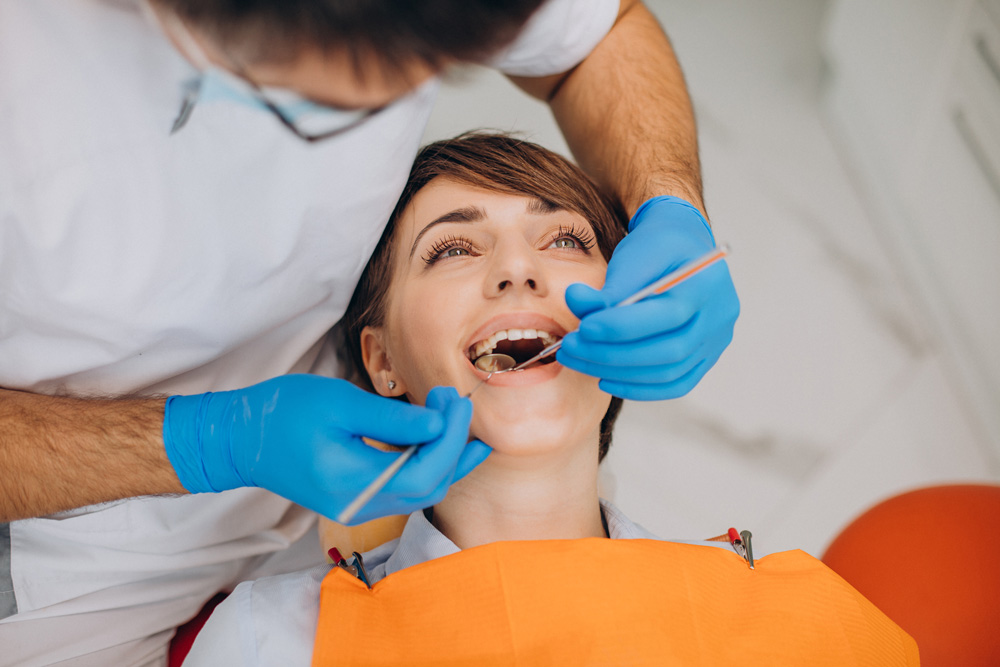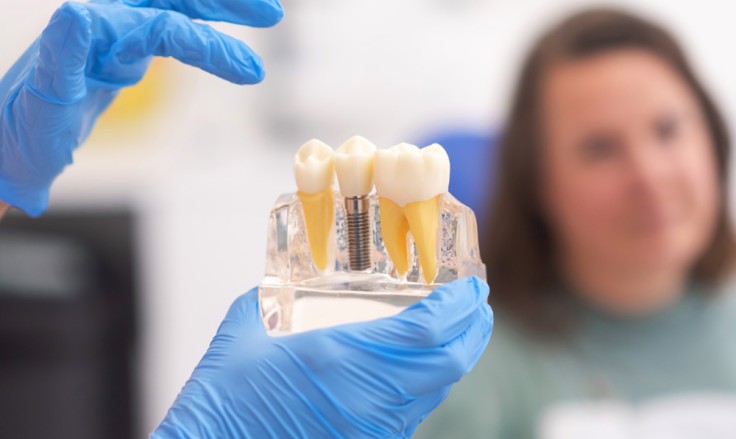Introduction
Missing teeth can affect your appearance, confidence and ability to chew properly. Fortunately, dental implants offer a long-term solution. Among the most popular options are All-on-4 and All-on-6 dental implants. These full-arch replacements support an entire row of teeth using just four or six implants. Choosing the right one can depend on your bone density, lifestyle and long-term goals. While both techniques offer stability and aesthetics, they differ in structure and application. In this article, we’ll compare All-on-4 vs All-on-6 dental implants in detail. We’ll explain how they work, the recovery process and what patients typically experience.
All-on-4 vs All-on-6: What Are All-on-4 Dental Implants?
All-on-4 implants support a full arch of prosthetic teeth using four titanium implants. These are strategically placed in the jawbone to provide strong, even support.
Two implants are positioned vertically at the front of the jaw. The other two are angled at the back to maximise contact with existing bone. This approach avoids the need for bone grafting in most patients. This is even the case for those with bone loss.
The All-on-4 technique is known for its quick results. A temporary denture is often attached the same day. Permanent teeth are added after the implants fuse with the bone, usually within 3–6 months.
All-on-4 vs All-on-6: What Are All-on-6 Dental Implants?
All-on-6 dental implants follow a similar concept but use six implants instead of four. The added implants provide extra stability and support. This makes the method ideal for patients with higher chewing forces or bone volume.
The additional implants also reduce the load on each individual fixture. This can increase the lifespan of the restoration and improve long-term comfort. Like All-on-4, All-on-6 implants also support immediate dentures in many cases.
Healing takes a similar time - around three to six months. Once the implants have fused with the bone, the final set of teeth is attached. The process is efficient, durable and highly functional.
All-on-4 vs All-on-6: Implant Placement
The key difference lies in the number and position of implants. All-on-4 relies on angled placement at the back. This helps avoid bone grafting in many cases. All-on-6 uses straight placements, requiring more bone support.
The extra implants in All-on-6 distribute pressure more evenly across the jaw. This results in increased stability, especially for patients with strong biting needs. Consequently, All-on-6 may be better suited for those wanting added security and chewing strength.
Both techniques aim to restore aesthetics and function. However, the more extensive support offered by All-on-6 can appeal to those seeking enhanced durability.

All-on-4 vs All-on-6: Who Is a Good Candidate for Each?
Candidates for both options should have some bone density remaining in the jaw. However, All-on-4 is often recommended for those with moderate bone loss. Its angled implants make use of available bone without grafting.
All-on-6, by contrast, may be ideal for patients with sufficient bone and higher functional demands. Do you grind your teeth, eat hard foods or want more strength overall? If so, this option might suit you better.
A dental CT scan is typically performed to assess bone quality. It also helps decide which method is more appropriate. Your dentist will also consider oral health history, lifestyle and aesthetic goals.
Cost Differences: All-on-4 vs All-on-6 Dental Implants
One of the key considerations is cost. Generally, All-on-6 is more expensive than All-on-4 due to the additional implants. More implants also mean longer surgery and potentially more materials for the prosthetic teeth.
However, the price gap varies by clinic, surgeon and location. In Turkey, both treatments are far more affordable than in countries like the UK, USA or Australia. Patients benefit from world-class care, modern clinics and competitive rates.
Although All-on-4 may appear more budget-friendly upfront, All-on-6 can offer longer-term durability. Discussing your goals with a dental specialist will help balance cost with long-term value.
All-on-4 vs All-on-6: Appearance and Functionality
Both All-on-4 and All-on-6 offer natural-looking results. The prosthetic teeth are custom-designed to match your desired smile. They restore facial structure, improve speech and allow confident chewing.
Functionally, All-on-6 implants may feel slightly more secure due to the added support. This is especially noticeable when eating tougher foods. Nevertheless, All-on-4 provides excellent results and remains a reliable, proven method.
In both cases, patients often report a boost in confidence and quality of life. Eating, speaking and smiling become easier and more enjoyable.
All-on-4 vs All-on-6: Healing and Recovery Time
Both procedures involve minor surgery and require a healing phase. Patients can usually return to light activity within a few days. Full recovery and osseointegration, when the implants fuse with the bone, takes several months.
During this period, patients typically wear temporary dentures. These are replaced with permanent prosthetics after healing. Proper oral hygiene, soft foods and follow-up visits ensure a smooth recovery.
Pain is usually minimal and managed with medication. Most patients say the improvement in comfort and aesthetics makes the process worthwhile.
All-on-4 vs All-on-6:Longevity and Maintenance
Dental implants can last for decades with proper care. All-on-4 and All-on-6 both offer long-term stability when maintained well. The main difference lies in durability under pressure.
Because All-on-6 distributes force across more implants, it may offer added resilience. Still, All-on-4 remains effective for most users, especially when placed by skilled surgeons.
Daily brushing, flossing, and regular dental check-ups are essential. Avoiding tobacco and limiting hard foods also helps preserve your results. Maintenance is easy and similar for both implant types.
Choosing the Right Option for You
Choosing between All-on-4 vs All-on-6 dental implants comes down to your individual needs. If you have limited bone or want a less invasive solution, All-on-4 may be ideal. If you prefer added support and durability, All-on-6 could be the better choice.
Speaking to a dental professional can clarify your options. They will assess your oral health, bone density and lifestyle before making a personalised recommendation.
Both procedures offer excellent results. The best choice depends on your health, goals and budget.
Conclusion
Both All-on-4 and All-on-6 dental implants are transformative treatments for full-arch tooth loss. They restore function, aesthetics and confidence with natural-looking, stable results. All-on-4 is ideal for patients with lower bone density. Meanwhile, All-on-6 offers enhanced support for those needing greater durability. Understanding your specific goals will help determine the best approach. Either way, you’ll benefit from a reliable, long-lasting solution to missing teeth.
For more information and to book a consultation visit the ACIBADEM Beauty Center Dental Treatments page.
Frequently Asked Questions
Yes. With proper care, both can last many years or even a lifetime.
Not always. All-on-4 often avoids grafting due to angled implant placement.
Both feel natural, though All-on-6 may offer slightly more stability.
Yes, after the healing period. A soft diet is required during early recovery.
Yes. Many patients choose Turkey for its affordable, high-quality dental implant services.














